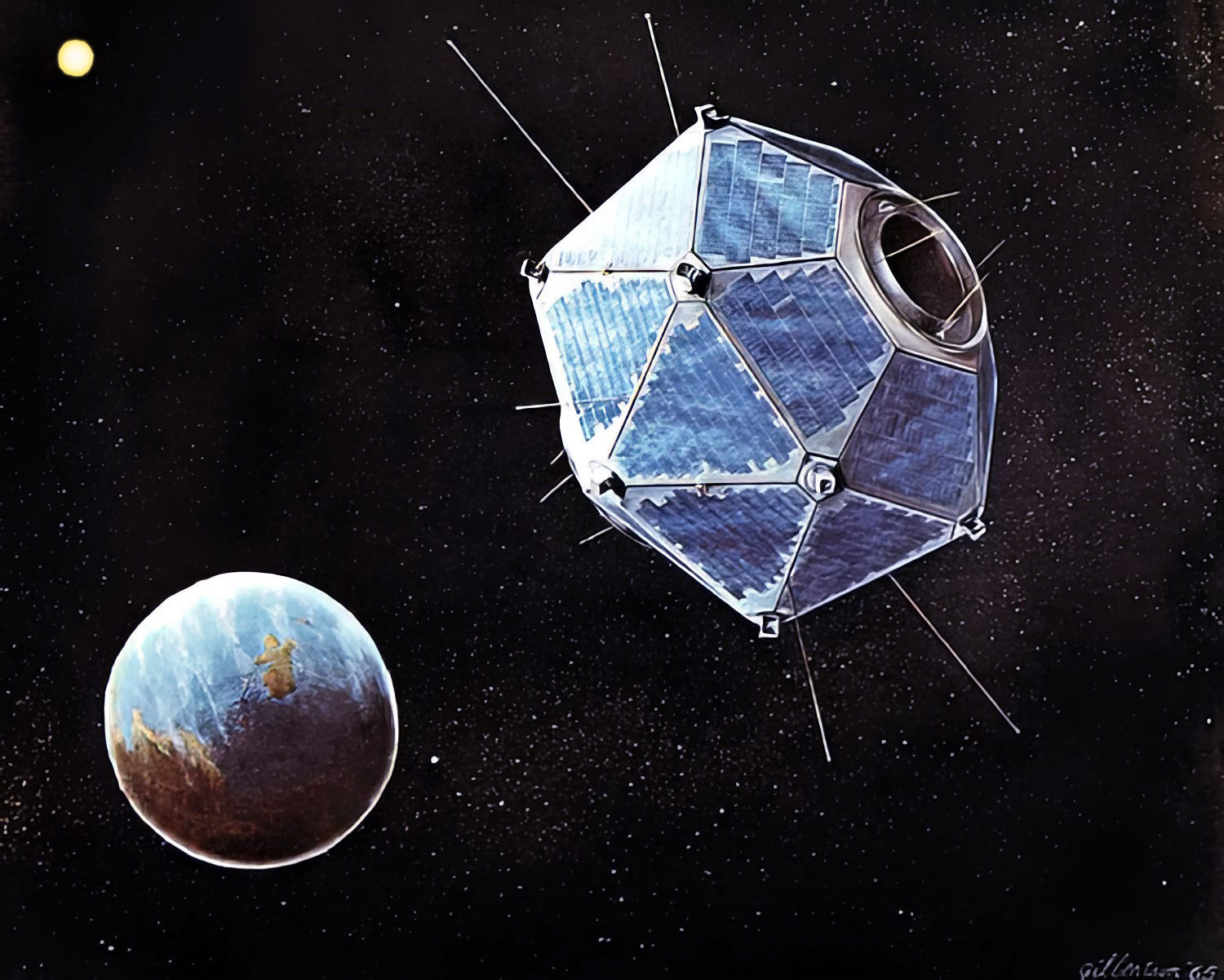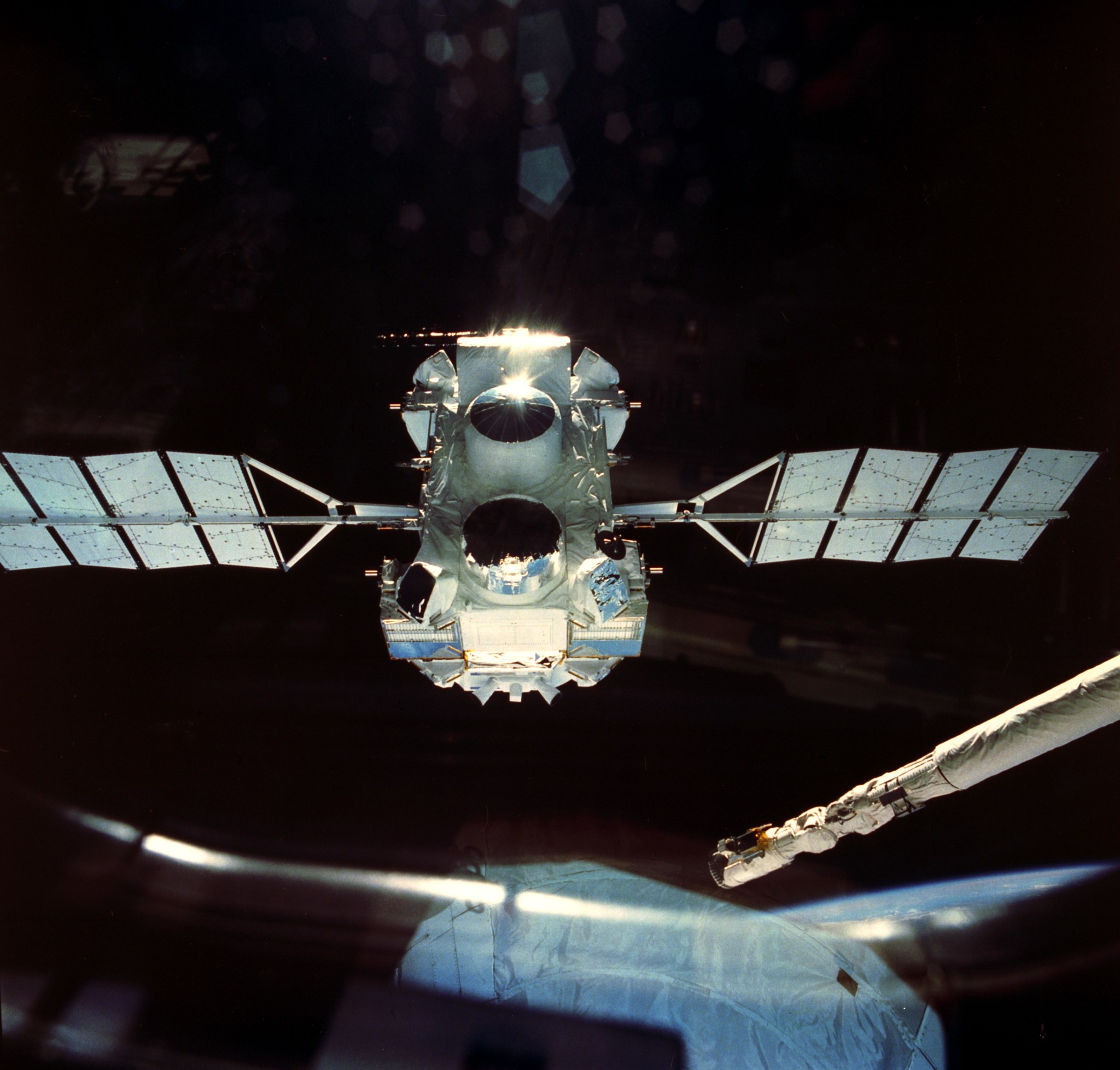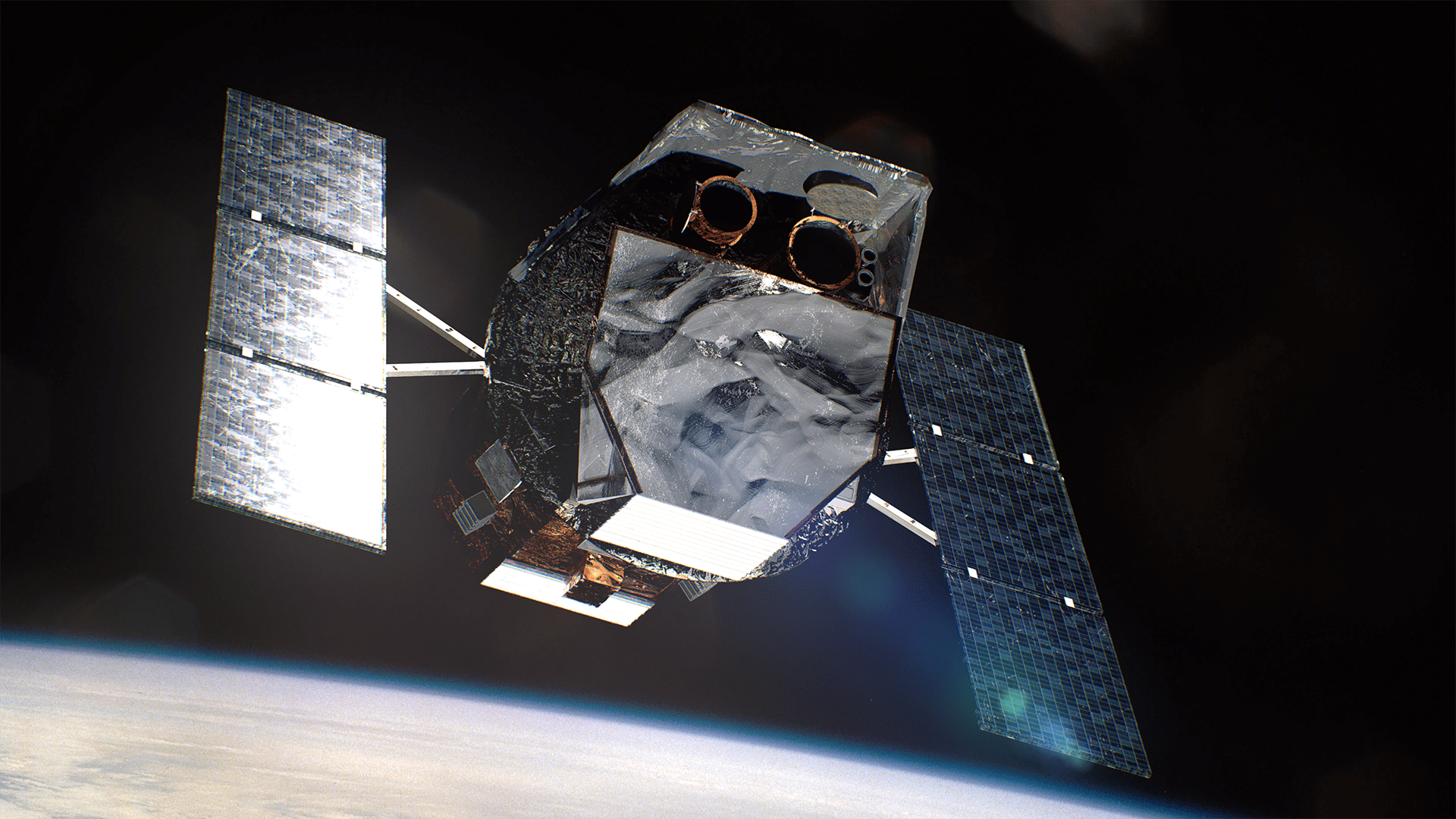Fifty years ago, on June 1, 1973, astronomers around the world were introduced to a powerful and perplexing new phenomenon called GRBs (gamma-ray bursts). Today sensors on orbiting satellites like NASA’s Swift and Fermi missions detect a GRB somewhere in the sky about once a day on average. Astronomers think the bursts arise from catastrophic occurrences involving stars in distant galaxies, events thought to produce new black holes.
“I can still remember the excitement when gamma-ray bursts were discovered,” said Charles Meegan, a research scientist at the University of Alabama, Huntsville, who helped develop GRB detectors on NASA’s Compton and Fermi satellites. “I was a graduate student then, unaware that the study of these strange events would be my career for the next 50 years.”
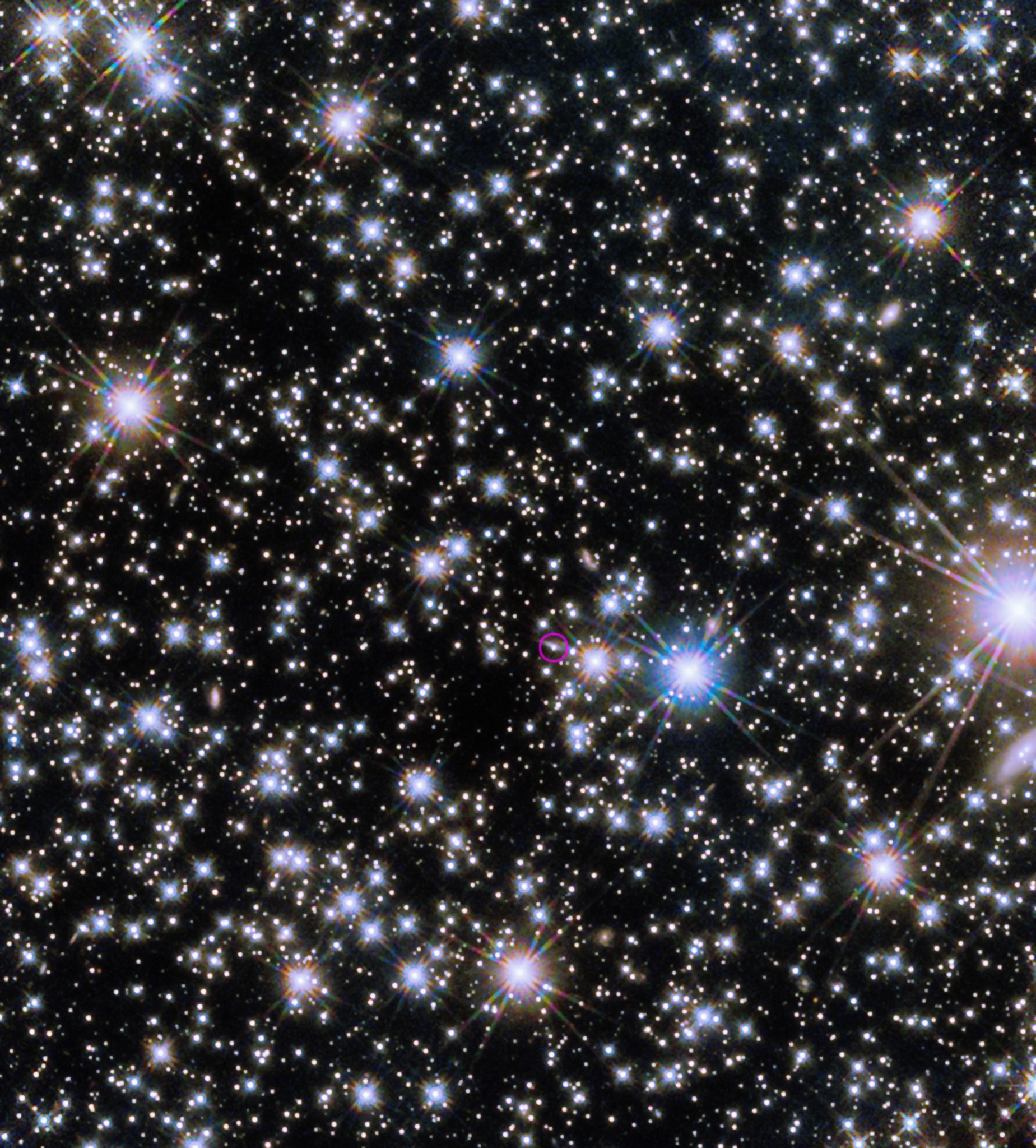
Far-Flung Flare-Ups
With GRBs, just about everything is extreme. They occur so far beyond our galaxy that even the closest-known burst exploded more than 100 million light-years away. Each burst produces an initial pulse of gamma rays, the highest-energy form of light, that typically lasts from milliseconds to minutes. This emission comes from a jet of particles moving close to the speed of light launched in our direction, and the closer we are to looking straight down the barrel, the brighter it appears. Following this prompt emission is a fading afterglow of gamma rays, X-rays, ultraviolet, visible, infrared, and radio light that astronomers may be able to track for hours to months.
Even half a century on, GRBs offer up surprises. One recent burst was so bright it temporarily blinded most of the gamma-ray detectors in space. Nicknamed the BOAT (for brightest of all time), the 7-minute blast may have been the brightest GRB in the past 10,000 years. It also showed that scientists’ most promising models of these events are nowhere near complete.
Nuke Watchers
The GRB story begins in October 1963, when a treaty signed by the United States, the United Kingdom, and the Soviet Union prohibiting the testing of nuclear weapons in the atmosphere, under water, or in space went into effect. To ensure compliance, the U.S. Air Force had been managing an unclassified research and development effort to detect nuclear tests from space. A week after the treaty went into effect, the first two of these satellites, called Vela (from the Spanish “to watch”), began their work.
Launched in pairs, the Vela satellites carried detectors designed to sense the initial flash of X-rays and gamma rays from nuclear explosions. Sometimes they triggered on events that clearly were not nuclear tests, and scientists collected and studied these observations. With improved instruments on the four Vela 5 and 6 satellites, Ray Klebesadel at Los Alamos National Laboratory in New Mexico, together with his colleagues Ian Strong and Roy Olsen, determined directions to 16 confirmed gamma-ray events well enough to rule out Earth and the Sun as sources. They published a paper announcing the discovery in The Astrophysical Journal on June 1, 1973.
Using a detector aboard the IMP 6 satellite intended to study solar flares, Tom Cline and Upendra Desai at NASA’s Goddard Space Flight Center in Greenbelt, Maryland, quickly confirmed the Vela findings.
Breakthroughs: BATSE & BeppoSAX
While theorists proposed 100 models in an effort to explain GRBs – most involving neutron stars in our own galaxy – observational progress was slow despite the growing number of detections by different spacecraft. Gamma rays can’t be focused like visible light or X-rays, making precise localizations quite difficult. Without them, it was impossible to search for GRB counterparts in other wavelengths using larger telescopes in space or on the ground.
In 1991, NASA launched the Compton Gamma Ray Observatory, which included an instrument named BATSE (Burst and Transient Science Experiment) dedicated to exploring GRBs. Developed at NASA’s Marshall Space Flight Center in Huntsville, Alabama, by a team that included Meegan, BATSE was about 10 times more sensitive than previous GRB detectors. Over Compton’s nine-year mission, BATSE detected 2,704 bursts, which gave astronomers a rich set of observations made with the same instrument.
In its first year, BATSE data showed that bursts were distributed all over the sky instead of in a pattern that reflected the structure of our Milky Way galaxy. “This suggested that they were coming from distant galaxies, and that meant they were more energetic than most scientists thought possible,” Meegan said.
Around the same time, Chryssa Kouveliotou, another member of the BATSE team, led an effort to classify the bursts. The team found that burst durations clustered into two broad groups – one lasting less than two seconds, the other lasting longer than two seconds – and that short bursts produced higher-energy gamma rays than long ones.
“So both temporal and spectral properties agreed in identifying two separate groups of GRBs: short and long,” said Kouveliotou, who now chairs the department of physics at George Washington University. “Soon after, theorists associated long GRBs with the collapse of massive stars and short ones with binary neutron star mergers.”
The next step in understanding came with watershed observations from the Italian-Dutch satellite BeppoSAX. Although not specifically designed as a GRB mission, its mix of instruments – including a gamma-ray monitor and two wide-field X-ray cameras – proved a boon to the field.
When a burst occurred in the field of view of one of the X-ray cameras, the spacecraft could locate it well enough over a couple of hours that additional instruments could be brought to bear. Whenever BeppoSAX turned to a GRB’s position, its instruments found a rapidly fading and previously unknown high-energy source – the X-ray afterglow theorists had predicted. These positions enabled large ground-based observatories to discover long GRB afterglows in visible light and radio waves, and also permitted the first distance measurements, confirming that GRBs were truly far-away events.
Need for Speed
In 2000, NASA launched HETE 2, a small satellite designed to detect and localize GRBs. It was the first mission to compute accurate positions onboard and quickly – in tens of seconds – communicate them to the ground so other observatories could study early afterglow phases. The burst it discovered on March 29, 2003, also exhibited definitive supernova characteristics, confirming a suspected relationship between the two phenomena.
What took BeppoSAX a couple of hours, NASA’s Neil Gehrels Swift Observatory, launched in 2004, can do in about a minute. “We named it Swift for a reason,” said Goddard’s S. Bradley Cenko, the mission’s current principal investigator. “Its rapid, automated response allowed us to detect flares and other features in X-ray afterglows not previously seen.”
Following up on GRBs detected by these missions confirmed that long bursts were associated with the star-forming regions of galaxies and were often accompanied by supernovae. In May 2005, Swift was able to pinpoint the first afterglow of a short GRB, showing that these blasts occur in regions with little star formation. This bolstered the model of short bursts as mergers of neutron stars, which can travel far from their birth place over the many millions of years it takes for them to crash together.
In 2008, NASA’s Fermi Gamma-ray Space Telescope joined Swift in hunting GRBs and has observed about 3,500 to date. Its GBM (Gamma-ray Burst Monitor) and Large Area Telescope allow the detection and follow-up of bursts from X-rays to the highest-energy gamma rays detected in space – an energy span of 100 million times. This has enabled the discovery of afterglow gamma rays with billions of times the energy of visible light.
The Next Revolution
In 2017, Fermi and the European INTEGRAL satellite linked a short GRB to a source of gravitational waves, ripples in space-time produced as orbiting neutron stars spiraled inward and merged. This was an important first that connected two different cosmic “messengers,” gravity and light. While astronomers haven’t seen another “gravity and light” burst since, they hope more will turn up in current and future observing runs of gravitational wave observatories.
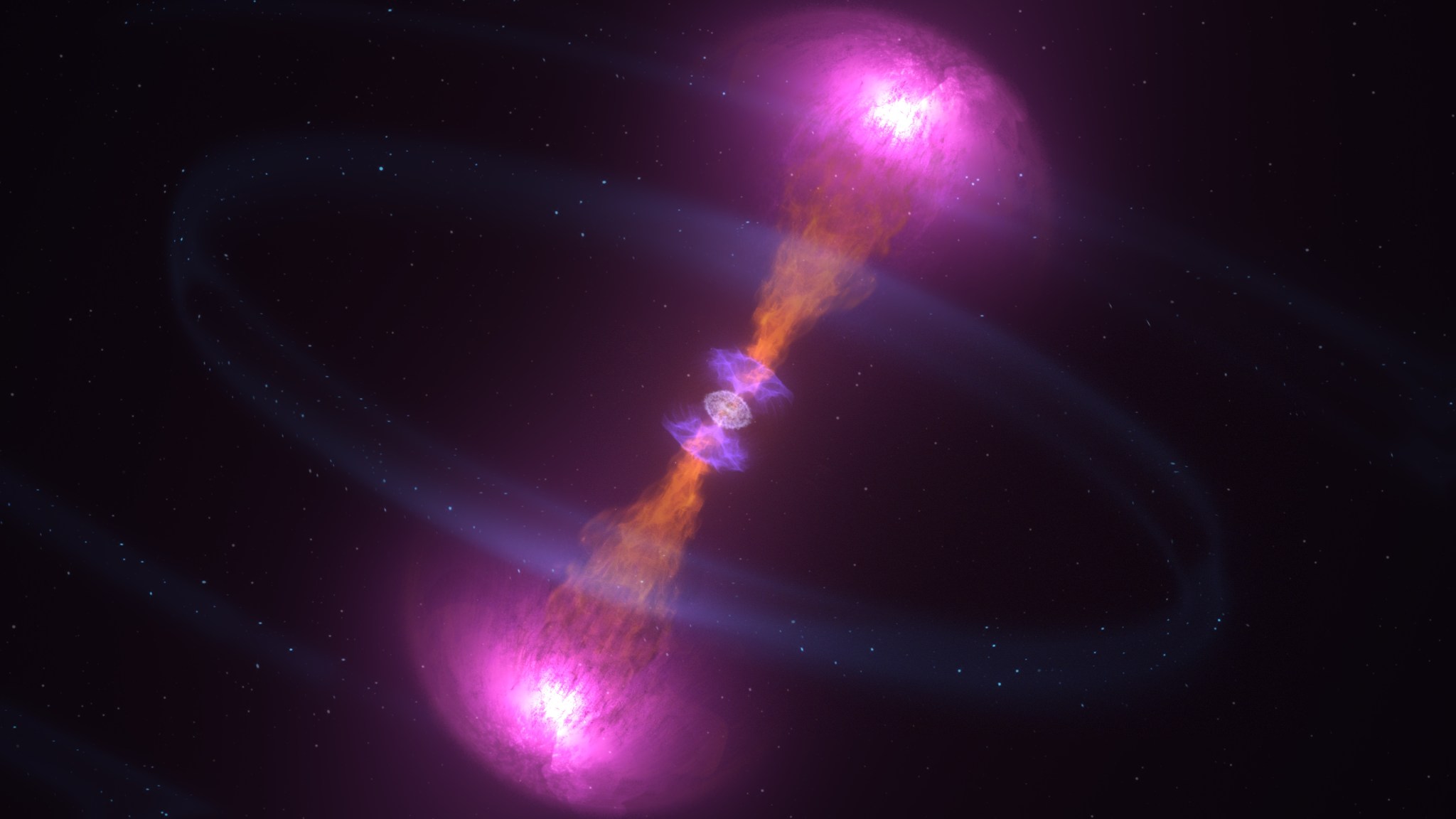
“We’re building new satellites with greater sensitivity to delve more deeply into this phenomenon, so the future of GRB science is bright,” said Marshall’s Dan Kocevski, a member of the Fermi GBM team and the principal investigator for StarBurst, a small satellite designed to explore GRBs from neutron star mergers. Other missions include Glowbug, part of an experiment package launched to the International Space Station in March and led by J. Eric Grove at the U.S. Naval Research Laboratory in Washington; BurstCube, led by Goddard’s Jeremy Perkins and slated for launch in early 2024; MoonBEAM, which would orbit between Earth and the Moon and is led by Marshall’s Chiumun Michelle Hui; and LEAP, designed to study GRB jets from the space station, led by Mark McConnell at the University of New Hampshire, Durham.
And as gravitational and gamma-ray facilities both improve their reach, a new chapter of the GRB story will open.
“What will completely revolutionize our understanding of GRBs,” said Alessandra Corsi, an associate professor at Texas Tech University in Lubbock, “will be the ability to track them back to when the universe was most intensely forming stars, around 10 billion years ago. This part of the universe will be probed by the next generation of gravitational wave detectors – 10 times more sensitive than what we currently have – and by future gamma-ray missions that can ensure continuity with the fantastic science Swift and Fermi have enabled.”
By Francis Reddy
NASA’s Goddard Space Flight Center, Greenbelt, Md.
Media Contact:
Claire Andreoli
NASA’s Goddard Space Flight Center, Greenbelt, Md.
(301) 286-1940


























